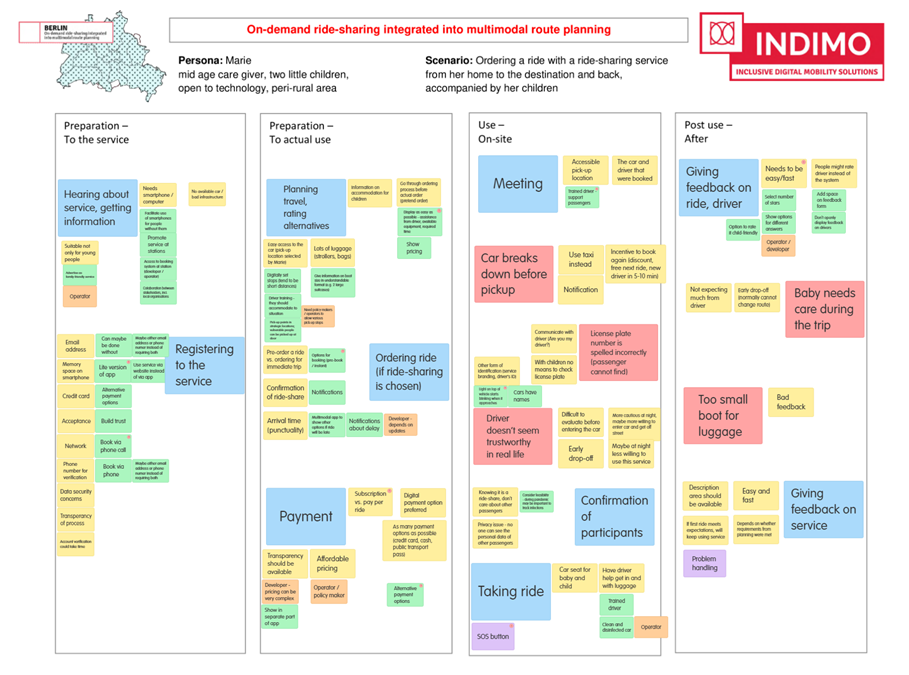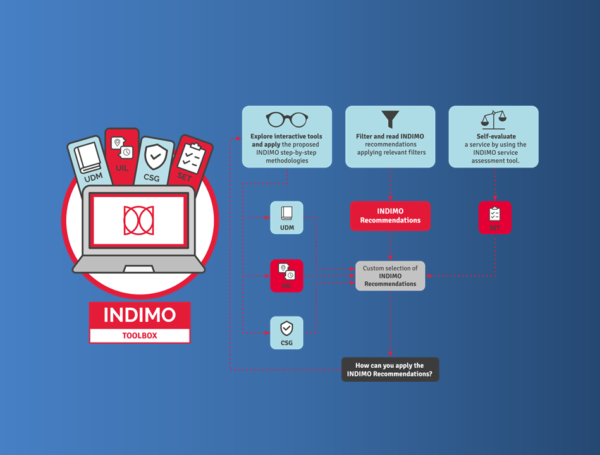by Annette Randhahn, Co-creation community leader, VDI-VDE/IT
Communities of practice building knowledge through co-creation
On 27 May 2021, the INDIMO project organised the second co-creation workshop on the validation of the Universal Design Manual (UDM). The 4-hour workshop, which took place online, drew in 39 participants, including operators, developers, policy makers, user organisations and researchers in the field of digital mobility and logistic services across Europe.
Objectives
The workshop is part of the INDIMO work package 2, the objective of which is to co-create a UDM with guidelines for developers and operators. The aim of the workshop was the examination of the practicability and feasibility of solutions and recommendations included in the first UDM draft. Interactive sessions elaborated how specific user needs, requirements of operators and policy makers as well as technical feasibility can be addressed and what solutions are available.
Report
Following the introduction to the INDIMO project and to the aims of the workshop, the first draft of the UDM was presented. Subsequently, the participants were divided into five smaller groups in which two interactive sessions took place, which encouraged participants to explore mobility from the persepctive of different transport users.
During the first session, each group was asked to take on the role of one of the following personas:
- Luisa – elderly migrant woman, afraid of online fraud
- Johanna – a middle aged single woman, visually impaired, an active walker
- Mariam – independent female student with digital know-how
- Mari Carmen – elderly woman, socially isolated, with basic digital skills
- Marie – middle-aged caregiver, two small children, open to technology, peri-rural
Keeping in mind their respective persona, the participants completed a fictional journey related to one of the five INDIMO pilot projects. These journeys included obstacles that participants discussed vividly in order to reflect on previously identified needs and to determine any other arising needs or barriers the persona may have or face during each step of the journey. As a result, participants became more empathetic regarding specific communities’ problems.
In the second interactive session, participants remained in the same groups. This time, however, they took on their real-life roles as user, policy maker, developer or operator and discussed possible solutions to the needs and barriers previously identified in order for them to be added to the UDM or validate the solutions already proposed by the UDM. The results were documented on virtual whiteboards (see Fig. 1)

Fig. 1: Results from Group 5: Persona “Marie” using the Berlin pilot for a ride-sharing service
Legend: Journey steps (blue), action cards (red), user needs (yellow), touchpoint or sub-service where support is needed (orange), solutions fitting UDM guidelines (green), previously identified needs (purple)
To wrap up the workshop, each group’s findings were examined and it was explained how the overall results will be used to revise and improve the UDM to create a final version. The main result of the workshop was that all digital mobility and delivery services intended for vulnerable-to-exclusion users must firstly build a high level of trust towards the service.



